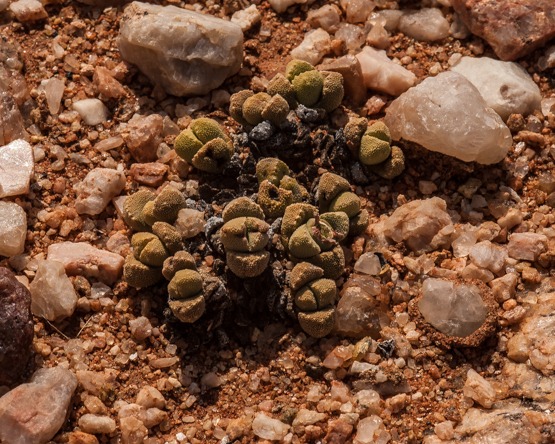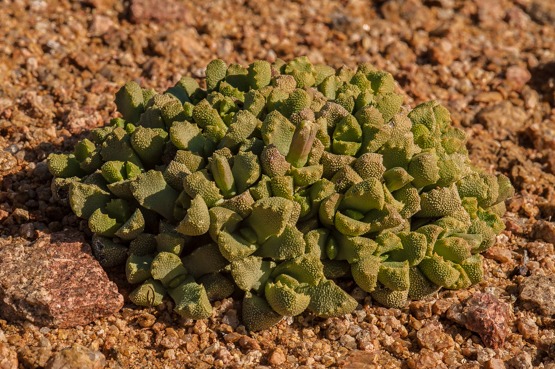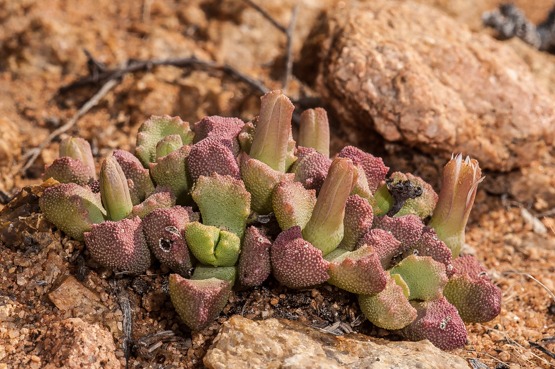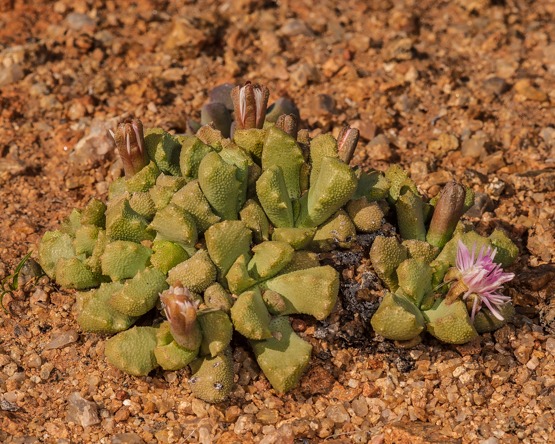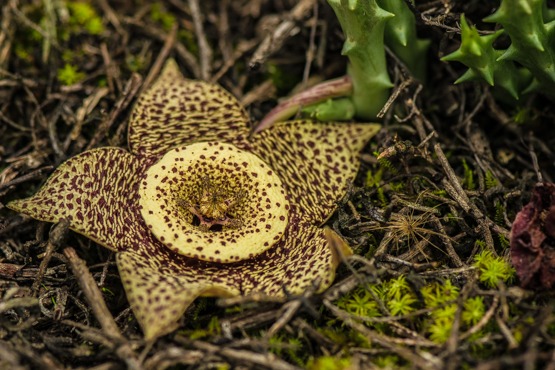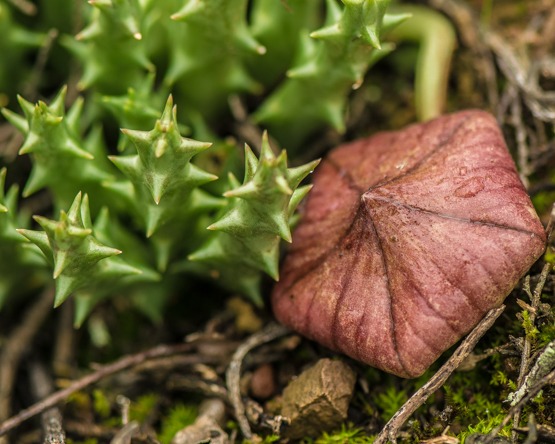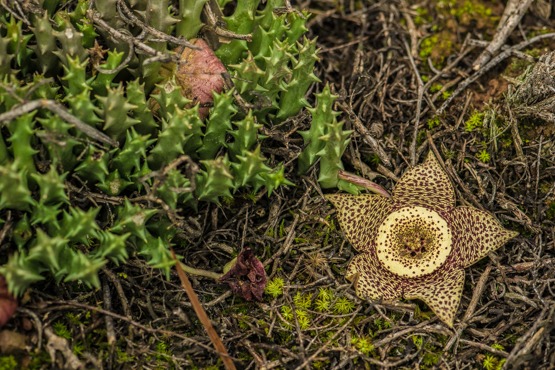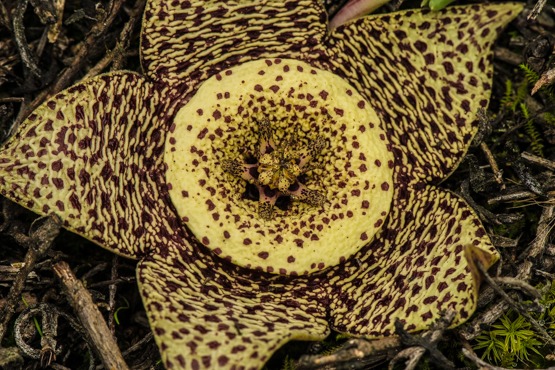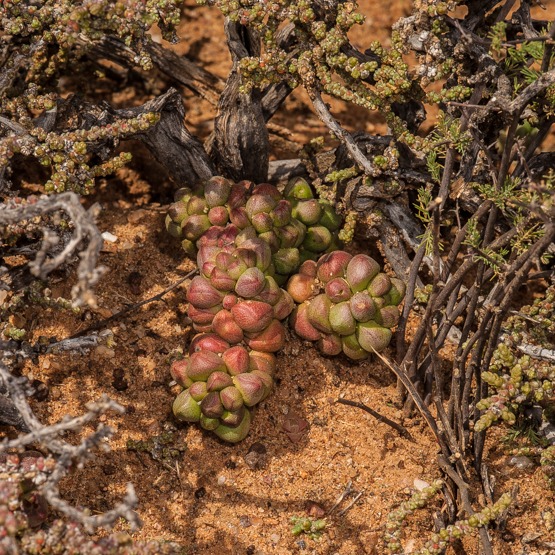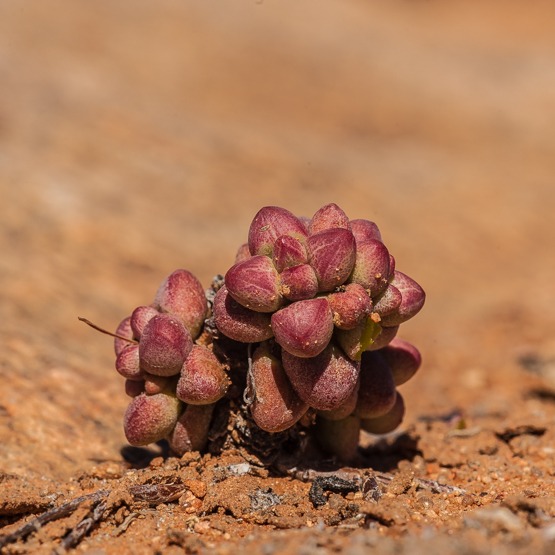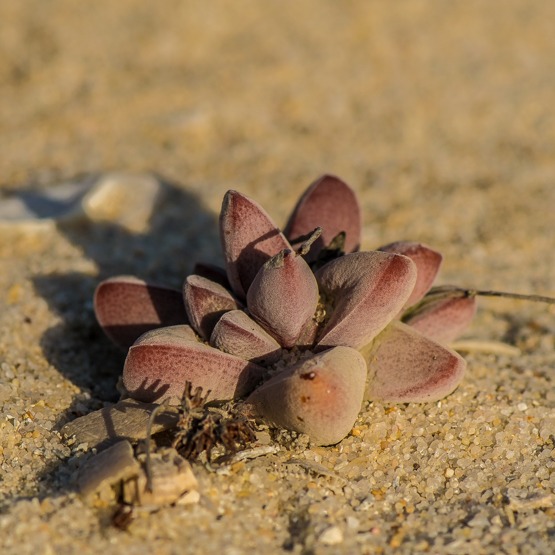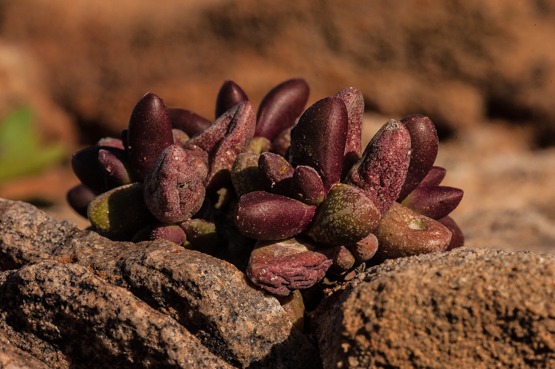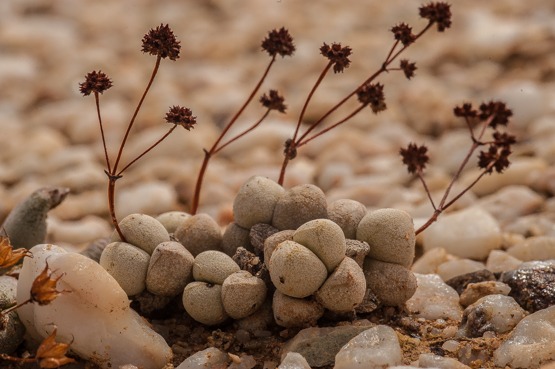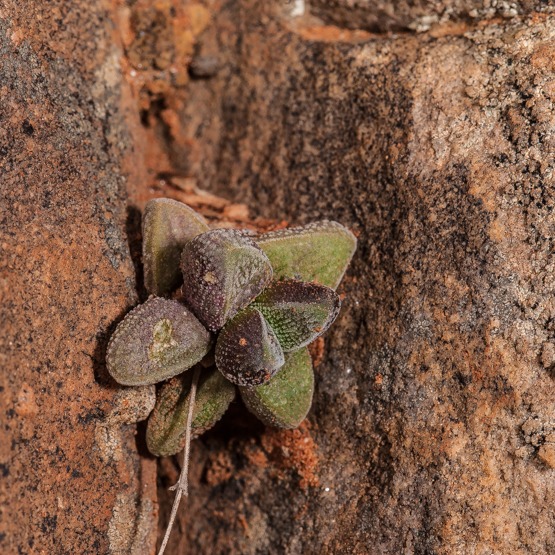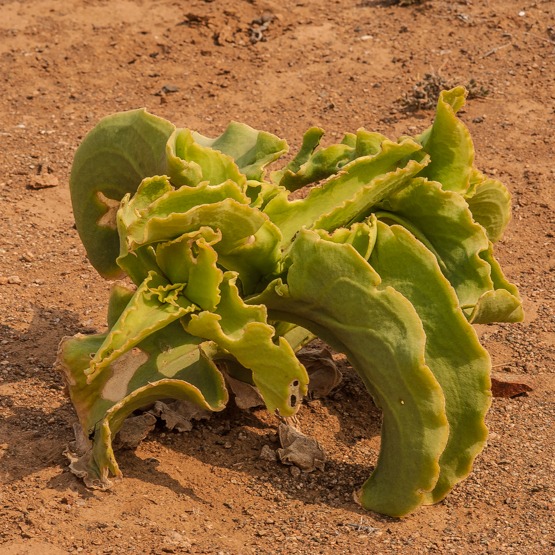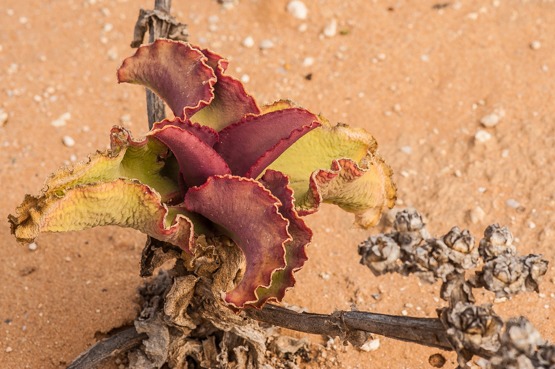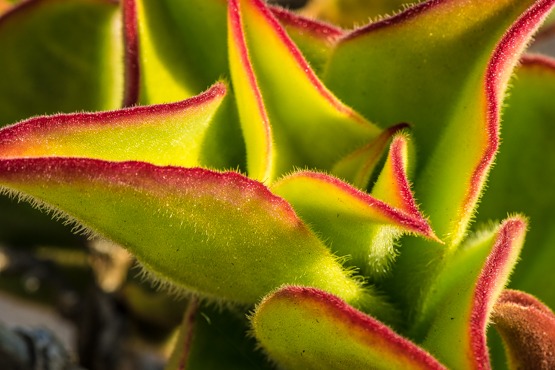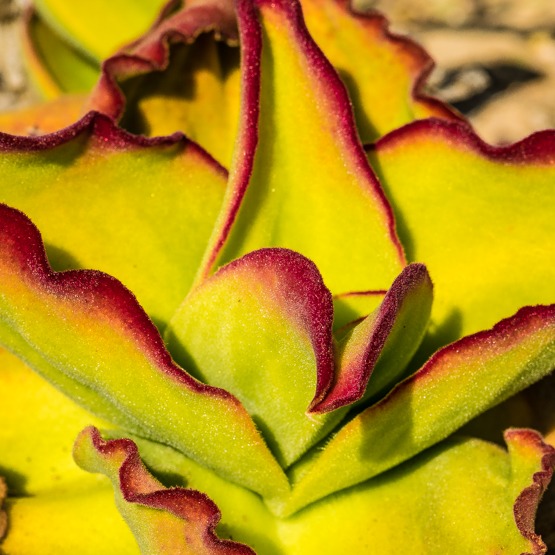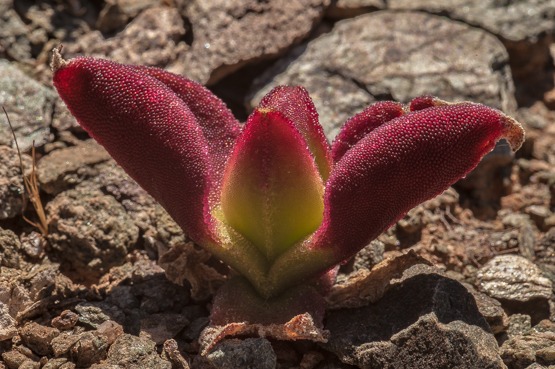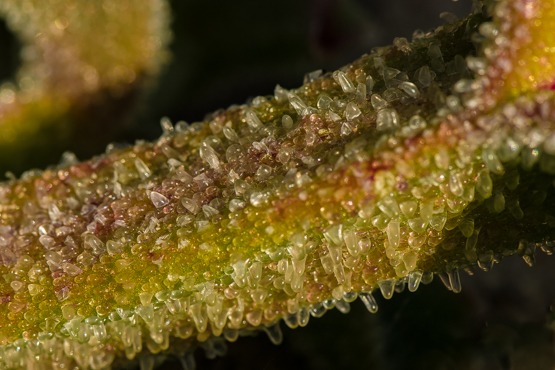Whereas nearly all species of Stomatium have yellow flowers, here – as the name implies- the flowers are white to pink. They are about 2.5 cm across and heavily scented; they begin to open only near sunset. The flowering period is stated as August to December.
The plants vary from compact and somewhat dome-shaped to flattish and forming mats up to 8 cm in diameter with age.
The leaves are spoon-shaped to trigonous, 2-2.5 long, about 1 cm long and about 0.7 cm thick; they have an inconspicuous keel, wavy margins with 3-6 small white, teeth-like warts and a very rough skin.
Occurring on sandy flats or pans with a high content of lime in Namaqualand and southwestern Bushmanland.
